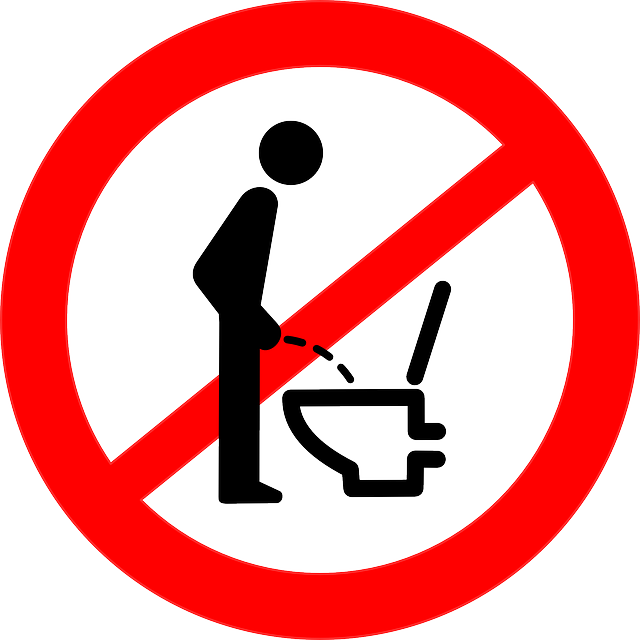A running toilet wastes water and money, but easy DIY fixes like replacing a flapper valve or adjusting the float level can stop it. Gather necessary tools and parts, locate the flush valve, and turn off water supply. Replace or adjust worn/damaged components, clean all parts, reassemble, and test for smooth flushing to effectively stop a running toilet using this guide.
Tired of a toilet that runs non-stop? Learn how to fix it yourself with our comprehensive guide! This article equips you with the knowledge and step-by-step instructions to tackle a constantly running toilet. From identifying the problem to gathering the right tools and materials, we break down simple DIY repairs for an efficient solution. Discover how to stop that persistent leak and save money on costly plumbing calls.
- Identifying the Problem: Recognizing a Running Toilet
- Tools and Materials for DIY Repair
- Step-by-Step Guide to Fixing a Running Toilet
Identifying the Problem: Recognizing a Running Toilet

A constantly running toilet can be both frustrating and costly, but identifying the problem is the first step to fixing it. Recognizing a running toilet involves observing your flush cycle. If water continues to run after the flush or if the tank refills frequently, these are clear signs of an issue. Pay attention to any unusual noises coming from the toilet as well, such as gurgling or constant dripping, which can indicate a clogged drain or a leaky flapper valve.
How to Stop a Running Toilet starts with understanding these symptoms. Once identified, you can take simple DIY steps to address common problems like replacing an old or damaged flapper valve, adjusting the float level in the tank, or clearing blockages in the drain. These quick fixes can save you money and prevent further damage from water waste.
Tools and Materials for DIY Repair

When it comes to DIY toilet repair, having the right tools and materials is essential for successfully fixing a constantly running toilet—a common issue that can waste valuable water and increase your utility bills. For this project, you’ll need only a few basic tools, such as a wrench or pliers for loosening any hardware, an adjustable or ratchet set for tightening new parts, and possibly a new flapper (the part that covers the hole in the tank). Don’t forget to gather some common household items like rags, a bucket, and gloves for safety. Additionally, having a supply of replacement parts—like a flush valve, seal, or fill valve assembly—can make quick work of more complex repairs, ensuring you stop the running toilet effectively.
Step-by-Step Guide to Fixing a Running Toilet

Fixing a running toilet is an easy DIY project that can save you money on your water bills and help the environment. Here’s a step-by-step guide to tackling this common plumbing issue:
1. Locate the Flush Valve: Start by finding the flush valve, usually located at the back of the toilet bowl. It’s often covered by a small cap or seal. Remove this to access the internal parts.
2. Identify and Turn Off Water Supply: Before proceeding, remember to turn off the water supply valves beneath the toilet. This prevents any accidental flooding while you work. You can usually find two valves, one for each side of the toilet. Twist them clockwise to shut them off.
3. Check and Replace Flapper Valve: The flapper valve is a crucial component that seals off the water in the tank after each flush. Over time, it can become worn or broken, leading to a running toilet. Lift the float arm to raise the flapper and check for any tears or damage. If needed, replace the flapper with a new one of the correct size.
4. Adjust or Replace Float Ball: The float ball works in conjunction with the flapper to control water levels in the tank. Check if it’s sitting too high or low on the fill tube. Adjusting the chain connecting the float arm can often fix this. If the ball is damaged or worn, replace it with a new one.
5. Clean and Inspect: Remove any debris or mineral deposits from the fill valve and flush valve seats. Ensure everything is clean and well-seated for smooth operation.
6. Test the Toilet: Once your repairs are made, reassemble the toilet, turn on the water supply valves, and test the toilet’s functionality. You should now have a toilet that stops running after each flush.
Repairs don’t have to be daunting. By understanding your toilet’s inner workings and following a simple step-by-step guide, you can easily fix a running toilet with just basic tools and materials. Remember, knowing how to stop a running toilet not only saves you money on water bills but also contributes to preserving our precious resources. With a bit of time and patience, you can transform your constant companion into a reliable, water-efficient friend.
